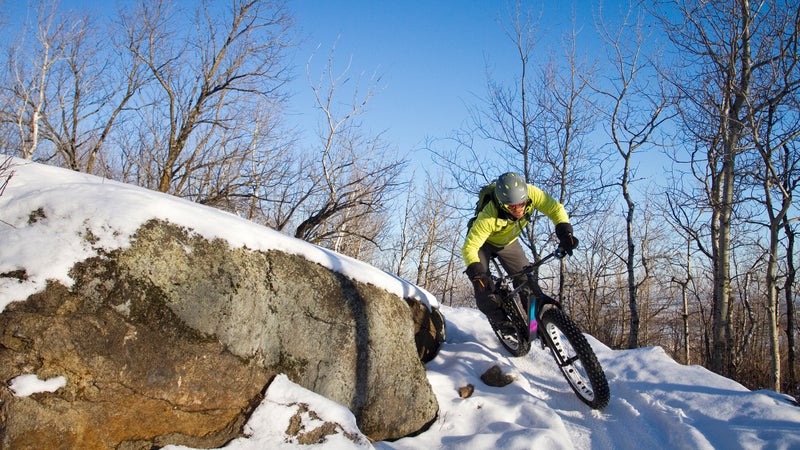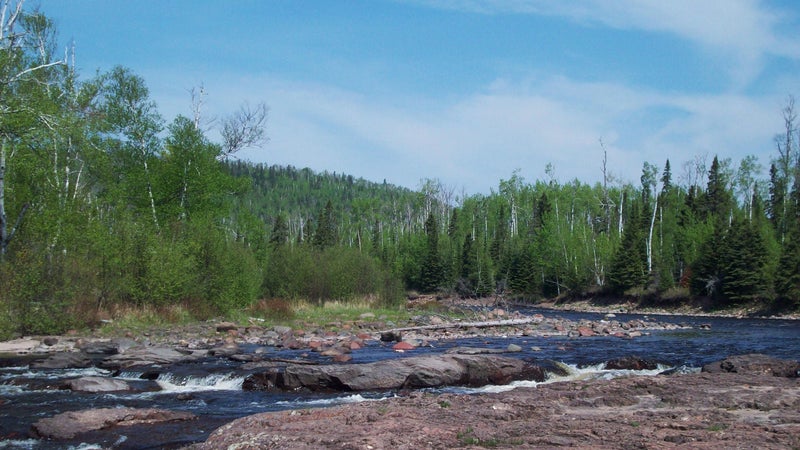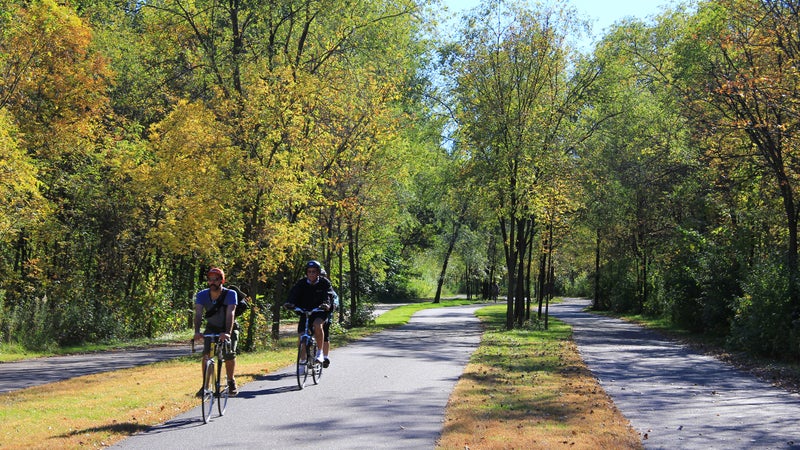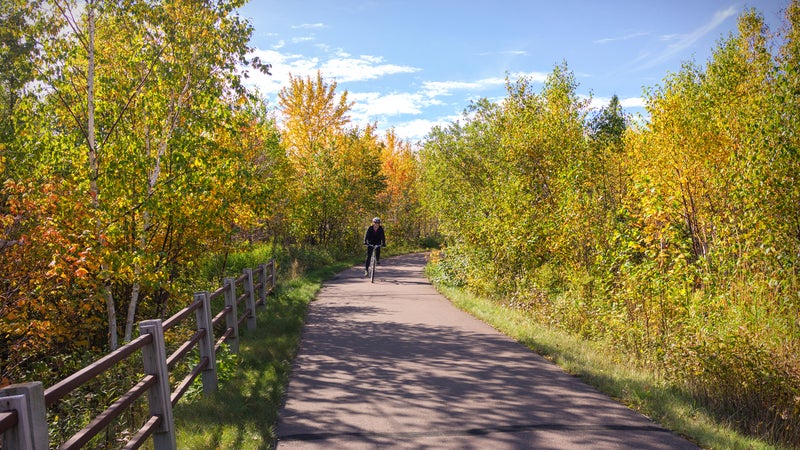In most places, winter is when bikes are stowed away until spring. Not in Minnesota. “People from around the country would make fun of me,” says Hansi Johnson, a former regional director at the . “They’d say, ‘Yeah, mountain biking in Minnesota is great four months of the year.’ I’d tell them, ‘You’re missing the point.’”
The point is that many Minnesotan cyclists actually crave winter. There’s a surreal magic to those moonlit, subzero winter nights when you can bundle up and set out into the snow like a two-wheeled Jack London. Counter to what cyclists in more forgiving climates might believe, it’s possible and—yes—even fun��to ride in Minnesota year-round.
Minneapolis maintains 128 miles of all-season bike trails and lanes, and Saint��Paul has 88, which makes the Twin Cities one of the biggest year-round urban cycling hubs in the world. To stay sane in the shoulder seasons, when mud makes mountain biking impossible, cyclists hit dirt roads on their gravel bikes. In summer��there are hundreds of miles of singletrack and paved rail-to-trail routes across the state. Riding all year may require a full set of bikes but, as Johnson says, “In Minnesota��you can’t be a one-trick pony.”
Winter

At this latitude, winter is cold enough that snow and ice stay on the ground all season, which makes for excellent fat biking. While the official season is December through March, snow consistently falls October through April. Minneapolis’s�� has more than six miles of designated fat-bike trails, and even makes snow on its lighted five-mile cross-country ski loop that opens for��riding Friday through Sunday evenings. Fat bikes for sale and rent��as well as hot cocoa are available at the , a new chalet with lockers, showers, and a fitness center. From January 30 to February 2, the park is the epicenter of the , a celebration of everything winter that includes four fat tire events, including sprint races and an urban tour.
Two hours north of Minneapolis, is a former iron-ore mining quarry turned mountain-bike park, with 25 miles of trail spread over 800 acres, all groomed for fat biking in winter. Ratings range from green��to double black diamond, and wind past snow-covered mining lakes. In February, it hosts the , with 10-, 20-, and 30-kilometer races on snowy singletrack.
Then there’s next-level winter riding: the , a frostbitten ultra that starts near the Canadian border. It’s scheduled for late January when the temperature can drop to negative 60 degrees. The race traverses south for 135 miles through remote wilderness, where wolf packs have been known to circle, before ending near Tower, Minnesota. “You’re in the middle of nowhere and are on your own for hours,” says Pat Greehan, who finished the race last year in 22 hours 6 minutes, right before the temperature plummeted to minus 40. “Between miles 90 and 110, there are 41 hills, most of which are not rideable when you’re pushing 50 pounds of gear in snow.” What more evidence do you need that Minnesotans like to suffer?
Spring

When the trails turn to slush, cyclists use their GPS to link dirt roads into gravel routes, from the rolling bluffs of Mississippi River country in the southeast corner of the state to the wooded Forest Service roads farther north. Most are training for races like May’s , northern Minnesota’s premier self-supported spring gravel event that offers 20-, 54-, and 110-mile rides. Starting on the shore of Lake Superior in the quaint harbor town of Grand Marais, the 110-mile ride climbs 5,500 feet on gravel roads through the Sawtooth Mountains near the Boundary Waters Canoe Area Wilderness. The ride ends with a beer or three at .
Summer

After the trails dry out in May, Duluth, the hilly, hipster-filled industrial city of 86,000 that sits on the western tip of Lake Superior, turns into a mountain-biking mecca. Over the past decade, Duluth,��in conjunction with local non-profit , has invested millions of dollars into building more than 100 miles of that stretch from the Chambers Grove Park along the Saint��Louis River in the west to the flowing waterfalls of Lester Park in the east. The 85-mile Duluth Traverse hugs the city’s coastline and has jaw-dropping views of the lake. Spiraling off it are separate loops that offer expert-only trails, from the 3,500-foot downhill insanity of Calculated Risk,��at in the south, to the steep bedrock roll downs of DM,��in Piedmont farther north. The outfitters host a three-hour tour of the Duluth Traverse ($79; hardtail rental included) and offers two-to-three-hour private lessons from a guide certified by the�� Professional Mountain Bike Instructors Association ($75).
Less extensive but equally exciting is the expanding network of trails in the 460-acre ��near Grand Rapids, a wooded playground overlooking Pokegama Lake and the Mississippi River, three hours north from Minneapolis. There are currently 22 miles of completed trail, offering variety in difficulty and style, from rocky, technical cross-country routes to jumpy downhills for advanced riders. in Grand Rapids rents hardtails and full-suspension bikes, starting at $45 for two hours.
Fall

To cycle through a flaming array of fall colors and get a serious hill workout, head south with a road or gravel bike to the and ��Trails, a 60-mile, Y-shaped, rail-to-trail network in the southeast corner of the state between Houston and Fountain. The route undulates through river-bluff country, historic small towns, and traditional Amish communities of southern Minnesota, a vast change from the dense pine forests of the north. Book a night (and a massage) at the funkily renovated (from $90), then set out on the town for a play at the renowned .


